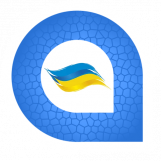Leaderboard
Popular Content
Showing content with the highest reputation on 10/25/19 in Posts
-
Better Translation Manager https://bitbucket.org/anders_melander/better-translation-manager The Better Translation Manager (BTM) is a replacement for the Delphi Translation Manager a.k.a. the Integrated Translation Environment (ITE) and External Translation Manager (ETM). Why is it better? Well, for one thing, it's free but more important; It actually works - unlike the ITE/ETM. Why? The standard Translation Manager that ships with Delphi today was originally an individual product known as the Borland Translation Suite. With Delphi 5 it became a part of the enterprise edition. The Borland Translation Suite showed great promise but unfortunately it never evolved from its roots as an external tool and has always been hampered by severe bugs that made it completely unusable in practice. As a result nobody uses it. This can be witnessed by the plethora of homegrown and commercial alternatives. The great benefit of the standard translation system is that it just works (this is the system itself I'm talking about, not the tools. The tools suck). Apart from the requirement that you must use resourcestrings you don't need to do anything special when writing your code. At run time you just place the compiled resource modules in the same folder as your application and the Delphi Run Time Library automatically takes care of loading and using the translations based on the current Windows user interface language. Anyway, since Embarcadero has now finally admitted that they are never going to fix the Delphi Translation Manager and instead recommend that we find alternative solutions, I decided that it was time I solved this little problem once and for all. The core functionality of the Better Translation Manager was written in two weeks during my summer vacation in Italy 2019. Amazing what you can do with a little pasta! Features Does not require any changes to the source code of the application being translated. Works with the existing standard Delphi localization system. Translates resourcestrings and all strings in forms regardless of any 3rd party components used. Works on compiled application. Source code is never used. Generates localized binary resource modules (resource DLLs). Does not use an external compiler. Can import existing translations from compiled application and resource modules or from XLIFF localization source files (dfn, rcn files). Read and save TMX and TBX translation memory files. Import Translation Memory from TMX (Translation Memory eXchange), TBX (TermBase eXchange), Microsoft Glossary and CSV. Machine Translation using Translation Memory, Microsoft Translation Service or Microsoft Terminology Service. Forms, Components, Types and Values that should be ignored can be specified in a Stop List. Translations are Spell Checked. Validation Rules to catch common translation mistakes. Supports Right To Left (RTL) editing based on translation language. Translation project is stored in a single XML file. Command line interface for use in automated build systems. Fast! Refreshing a large project typically takes less than a second vs. many minutes with the ITE/ETM. Supports all Unicode versions of Delphi (i.e. Delphi 9 and later). Resource modules contain the version resource of the source application. What it doesn't do There's one task that BTM, by design, doesn't attempt to solve: Localizing the placement and size of controls. Since it has been my experience that it is a far better idea to design the user interface in such a way that the layout automatically accommodates changes in font- and text size and shorter/longer texts due to translation, I decided from the start that I would not be supporting localization of size and position of controls. This also relieved me of having to create a run time form designer, supporting 3rd party controls visually (something that nobody so far has managed to find a foolproof solution to) and deciding what individual properties constitutes size/position values. Instead I just localize all string values - and only string values. But wait... There's More! Yup, you not only get this little wonder for free. You get the full source code too. Grab it at the repository linked at top. More details at the repository. Enjoy / Anders Melander
-

FYI: Graph showing iOS crashes with recent Delphi versions
Hans♫ replied to Hans♫'s topic in Cross-platform
Good news about iOS crashes! I owe Embarcadero and all of you to show the updated crash report graph. The problem was an internal hard limit in librtlhelper.a on the number of OC wrappers that could be created. As my app uses the TMC iCL native components, and is a large and comprehensive app, it wraps thousands of OC objects. Each new Delphi version used more and more OC wrappers on its own, leaving less for use in the app. That's seen clearly on the previous graph I showed. Marco sent an updated version of librtlhelper.a to me with a higher internal limit, and the result is seen clearly on the graph below. There are still some crashes though, which might indicate that a some of our users still reach the limit, <irony>since I can't imagine that there can be other errors in our software</irony>. -
Our iOS app made with Delphi showed an alarming increase of crashes with the latest update, that was built with Delphi 10.3. So I made this graph in "App Store Connect" that shows a similar increase of crashes when upgrading to Delphi 10.2.2. This is a bit scary... where will it end... Graph shows crashes per week: The vertical gray lines shows when we released a new update of our app. The number of sessions per week is almost the same during the whole period, so that does not influence the graph. Unfortunately I don't remember what version of Delphi I was using before the 10.2.2 upgrade.
-
sgcWebSockets is a complete package providing access to HTML5 WebSockets API (WebSocket is a web technology providing for bi-directional, full-duplex communications channels, over a single Transmission Control Protocol (TCP) socket) allowing to create WebSocket Servers, and WebSocket clients in VCL, Lazarus and Firemonkey Applications. What's new 4.3.1 - Added support for MQTT 5.0 - WebSocket Client now supports Token Authentication. - More compatibility with C++ Builder packages. - Some improvements about performance and stability. Main Features: - WebSocket and HTTP Support: sgcWebSockets includes client and server-side implementations of the WebSocket protocol (RFC 6455). HTTP/s is also full supported. Support for plain TCP is also included. - SSL/TLS for Security: Your messages are secure using our SSL/TLS implementation. Widest compatibility via support for modern TLS 1.2, TLS 1.1 and TLS 1.0 - Protocols and APIs: Several protocols are supported: MQTT, STOMP, WEBRTC, SIGNALR CORE, WAMP... Built-in protocols support Transactions, Datasets, QoS, big file transfers and more. APIs supported for third-parties like Pusher, Bitfinex, Huobi, CEX... - Cross-platform: Share your code using our WebSockets library for your Delphi VCL, Firemonkey, Intraweb, Javascript and C# projects. Includes Server, Clients and several protocols for building and connecting to WebSocket applications. - High Performance WebSocket Server based on Microsoft HTTP Framework and IOCP. Trial Version: http://www.esegece.com/download/sgcWebSockets.zip Compiled Demos: http://www.esegece.com/download/sgcWebSockets_bin.zip More Info: http://www.esegece.com/websockets
-
- vcl
- websockets
-
(and 2 more)
Tagged with:
-

Parsing Google Search Results redux
Cristian Peța replied to David Schwartz's topic in Network, Cloud and Web
https://community.idera.com/developer-tools/b/blog/posts/enterprise-connectors-now-part-of-rad-studio-enterprise-architect-edition -

Improvements in Uses Clause Manager Identifier Search
PeterPanettone replied to PeterPanettone's topic in GExperts
OK, I will do that. -
WPTools is a complete WYSIWYG word processing control which does not add a huge overhead to your program. It loads and saves RTF, HTML, text and its own native format. DocX import and export functionality is available as an add-on and, for PDF export, use our wPDF component. WPTools reliably supports editable headers and footers in its page layout mode. Zooming, splitscreen, tables - including the possibility of page breaks inside table rows - and a powerful concept with a CSS-like paragraph style are supported by the modern architecture. Optional support for footnotes, columns and text boxes is availabe in the Premium Edition. Please see our website and the WPTools 9 word processing EXE demo. WPTools 9 includes the improved component WPImagelist which holds the icons for the TWPToolbar. If you add the unit WPIcons to your project (i.e. in one uses clause) all TWPToolbars will automatically use the new, nicer icons. The color icons can now display the current color. You can use the WPImageList with the TWPToolButtons to create a modern GUI easily. The WPImageList can also populate a standard TImageList. WPTools 9 creates PropertyGrids To display an inspector like grid, you can use the new API AppendPropertyGrid and AppendPropertyRow. Support for inplace checkbox controls The check boxes can be automatically created within property grids. But they can also be added in code to any cell or text object. Internally they are based on a "InplaceEditor" architecture which will be subsequently extended and improved. Now it is possible to have round and square check boxes, also with radio button functionality. It is also possible to use an event to paint the appearance, i.e. by using gylphs from the TWPImageList. The extended properties used by the inplace editors can be saved in WPT format. Dynamic Tables (TableProducer component - included in WPTools "Bundle") Do you need to present the user the result of a database query and also print it? With WPTools' dynamic tables the user can not only browse the result of the query, but also change the appearance of the table and the data cells and print it in WYSIWYG manner. In contrast to "data-grid" solutions, it is also possible to copy part of the created tables and paste them directly into a word processor program, such as MS Word or, of course, TWPRichText. Improved, more intuitive API Many low level TParagraph methods return a reference of the used paragraph. This makes compact and easy to understand coding possible. There is now also a simplified variant of TableAdd() which works with an anonymous procedure as callback New possibility to automatically direct all character attribute changes to the attributes of the paragraph If axtivated, a change of the font of a paragraph will not change the current writing mode or the selected text but the paragraph(!) attributes directly. The effect is, that the complete paragraph will change. Also the character attributes will automatically cleared. We uses this feature in our TableProducer demo. Here the user can change the attributes of the lines with the field names and later this attribute will be used to update the table. So the user can directly change the background color or use a bold or italic font style. Support for the Windows Emoji Font. Symbol objects can now be rendered using Direct2D (on a temporary bitmap, for compatibility). This enables the colors in certain fonts, such as the Segoe UI Emoji font. The special rendering can be enabled using ViewOptionsEx2 and is also activated in the Insert-Symbol dialog for the font with the name in the variable WPDrawD2DTextForFont and can also be selected per object. Regards, Julian Ziersch WPCubed GmbH - www.wpcubed.com
-
I noticed that 10.2 noticably slows down due to the progress dialog. When compiling the exact same code in the commandline compiler or without the dialog. It even has been reported (https://quality.embarcadero.com/browse/RSP-22056) - not sure exactly what has been done since then as we won't upgrade from 10.1 for other reasons so my 10.2 and 10.3 installations don't see any huge projects.
-
It is truly tragic that Linux is not available for the Pro SKU. It should even have been in the Community version IMO. Imagine the potential plethora of code coming from open source projects.
-
They're unknown internally too. I'll never forget the time Marco scheduled a preview webinar for an upcoming release and Embarcadero went and released it two or three days before the preview was scheduled! Marco joked it was now a "postview webinar", but it struck me as strange that not even the project manager had any idea when the product would be released.
![Delphi-PRAXiS [en]](https://en.delphipraxis.net/uploads/monthly_2018_12/logo.png.be76d93fcd709295cb24de51900e5888.png)





